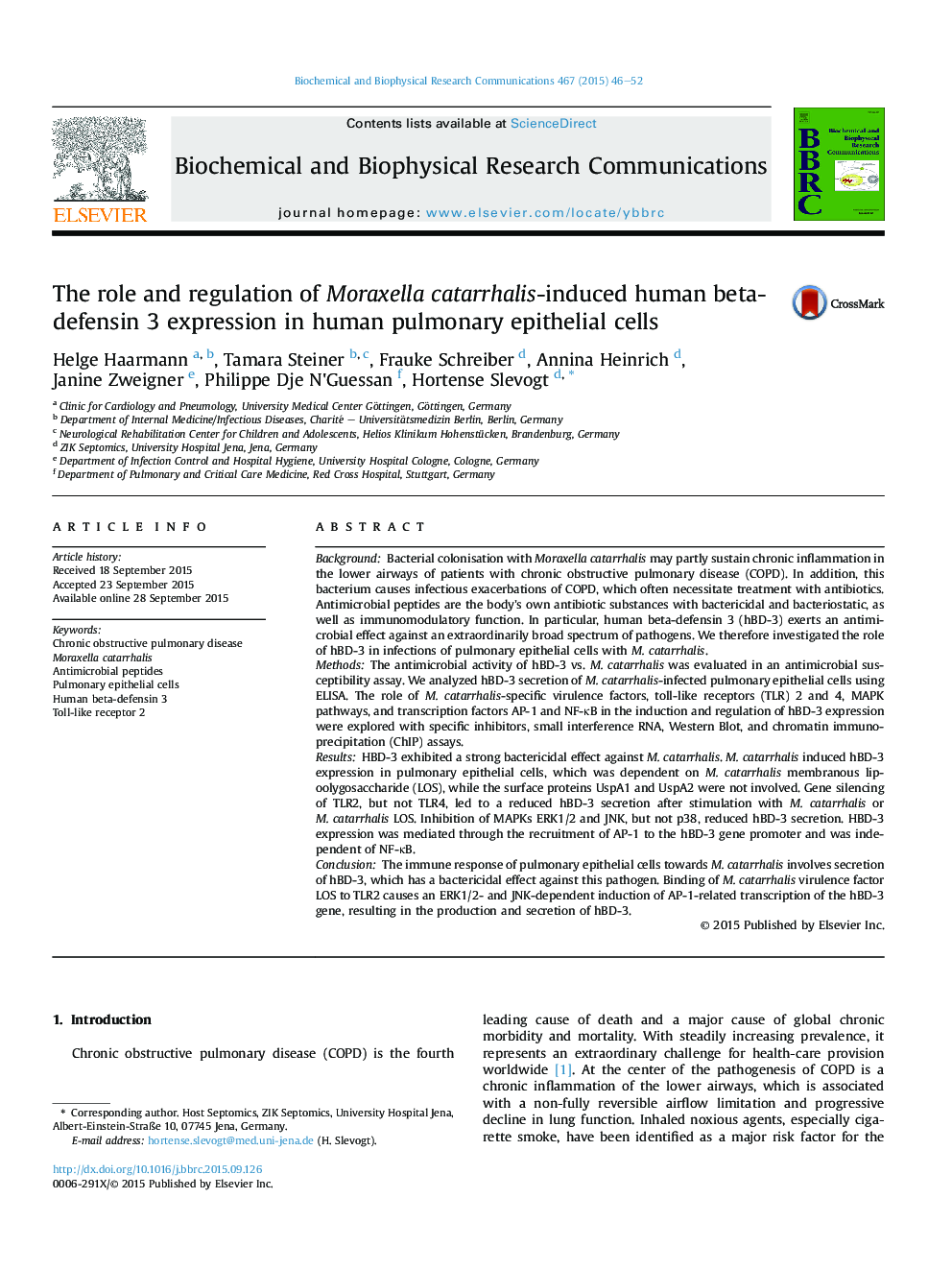| کد مقاله | کد نشریه | سال انتشار | مقاله انگلیسی | نسخه تمام متن |
|---|---|---|---|---|
| 1927948 | 1050299 | 2015 | 7 صفحه PDF | دانلود رایگان |

• hBD-3 exerts a strong bactericidal effect against Moraxella catarrhalis.
• M. catarrhalis induces hBD-3 expression in pulmonary epithelial cells.
• hBD-3 expression is dependent on M. catarrhalis lipoolygosaccharide (LOS).
• MAPK ERK1/2 and JNK, but not p38, are involved in regulating hBD-3 expression.
• hBD-3 expression is mediated via transcription factor AP-1, but not NF-κB.
BackgroundBacterial colonisation with Moraxella catarrhalis may partly sustain chronic inflammation in the lower airways of patients with chronic obstructive pulmonary disease (COPD). In addition, this bacterium causes infectious exacerbations of COPD, which often necessitate treatment with antibiotics. Antimicrobial peptides are the body's own antibiotic substances with bactericidal and bacteriostatic, as well as immunomodulatory function. In particular, human beta-defensin 3 (hBD-3) exerts an antimicrobial effect against an extraordinarily broad spectrum of pathogens. We therefore investigated the role of hBD-3 in infections of pulmonary epithelial cells with M. catarrhalis.MethodsThe antimicrobial activity of hBD-3 vs. M. catarrhalis was evaluated in an antimicrobial susceptibility assay. We analyzed hBD-3 secretion of M. catarrhalis-infected pulmonary epithelial cells using ELISA. The role of M. catarrhalis-specific virulence factors, toll-like receptors (TLR) 2 and 4, MAPK pathways, and transcription factors AP-1 and NF-κB in the induction and regulation of hBD-3 expression were explored with specific inhibitors, small interference RNA, Western Blot, and chromatin immunoprecipitation (ChIP) assays.ResultsHBD-3 exhibited a strong bactericidal effect against M. catarrhalis. M. catarrhalis induced hBD-3 expression in pulmonary epithelial cells, which was dependent on M. catarrhalis membranous lipoolygosaccharide (LOS), while the surface proteins UspA1 and UspA2 were not involved. Gene silencing of TLR2, but not TLR4, led to a reduced hBD-3 secretion after stimulation with M. catarrhalis or M. catarrhalis LOS. Inhibition of MAPKs ERK1/2 and JNK, but not p38, reduced hBD-3 secretion. HBD-3 expression was mediated through the recruitment of AP-1 to the hBD-3 gene promoter and was independent of NF-κB.ConclusionThe immune response of pulmonary epithelial cells towards M. catarrhalis involves secretion of hBD-3, which has a bactericidal effect against this pathogen. Binding of M. catarrhalis virulence factor LOS to TLR2 causes an ERK1/2- and JNK-dependent induction of AP-1-related transcription of the hBD-3 gene, resulting in the production and secretion of hBD-3.
Journal: Biochemical and Biophysical Research Communications - Volume 467, Issue 1, 6 November 2015, Pages 46–52